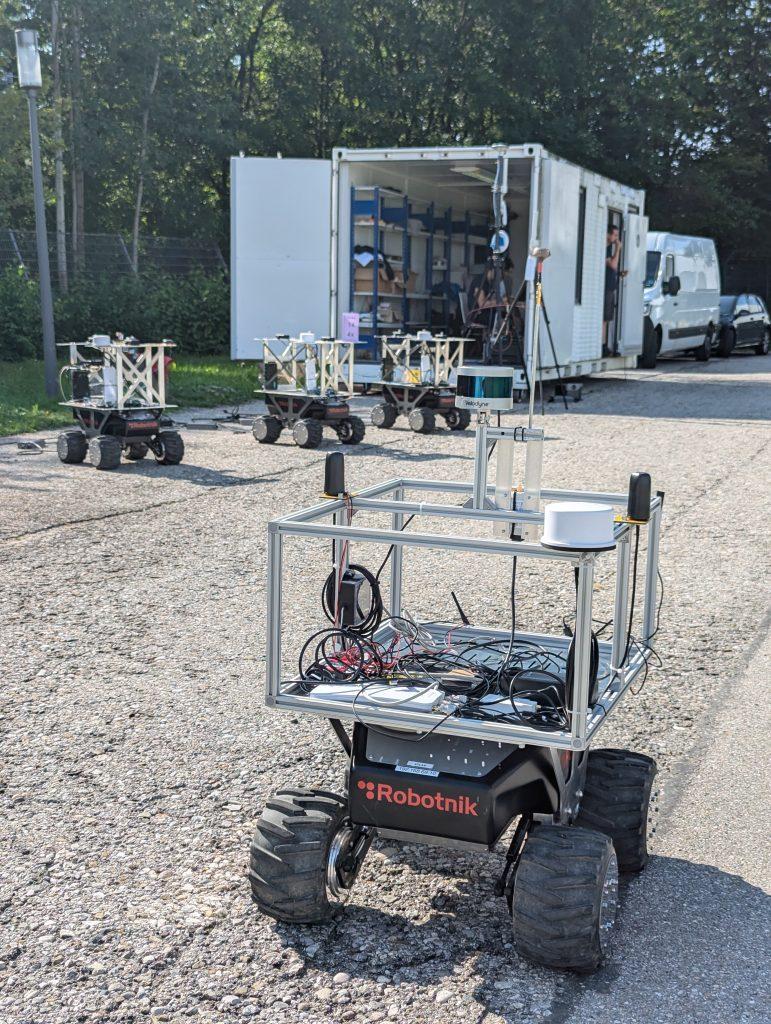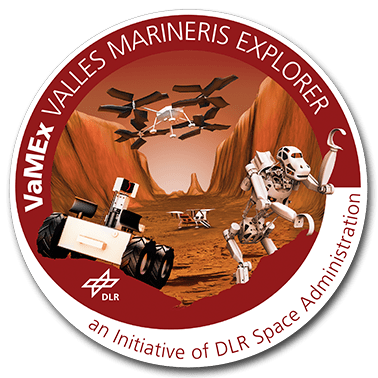Last week, the Cognitive Neuroinformatics (CNI) of the University of Bremen group and the DLR Institute of Communications and Navigation (DLR-KN) conducted a significant field test at the DLR site in Oberpfaffenhofen.

During the field test, we successfully integrated and validated several key components critical to our VaMEx3 RGE mission:
- Sensor and hardware integration: Several sensors such as LIDAR, IMU and GNSS for ground truth generation, and radio ranging devices were integrated on the rovers. Additionally, hardware devices for WIFI-like communication were integrated and used successfullly.
- Ground truth generation: The CNI implemented a robust method for ground truth generation by combining GNSS (Global Navigation Satellite System) and IMU (Inertial Measurement Unit) data. This fusion allowed for precise localization and accurate environmental mapping, crucial for validating our algorithms. Real-time kinematic (RTK) corrections are used for ground truth generation.
- Radio ranging: The radio ranging functionality of DLR-KN was thoroughly tested and yielded promising results. The integration was seamless between the Cognitive Neuroinformatics (CNI) rovers and the DLR-KN rovers, demonstrating effective communication and distance measurements in various field conditions. It was the first time the radio ranging was tested in ROS2.
One of the highlights of our field test was the live test of multi-robot SLAM (Simultaneous Localization and Mapping). In a dual-robot scenario, we tested the real-time capabilities of our SLAM algorithms. The results were encouraging, showing the potential for cooperative exploration and mapping in unknown environments using multiple robots. The data collected during these tests will be instrumental in refining our algorithms further.
Preliminary Dataset Collection for Future Development
We successfully recorded a preliminary dataset during the test, which will be invaluable for ongoing development and future testing phases. This dataset includes data from all integrated sensors and systems, providing a rich source of information to enhance the robustness and reliability of our ground exploration technology.
Challenges Encountered: ROS2 Communication
While we achieved many of our objectives, we also encountered a significant challenge: ROS2 communication issues. With numerous active devices attempting to exchange data, we faced problems related to bandwidth and data synchronization. These issues highlighted areas where further optimization is needed to ensure smooth communication in more complex scenarios.
Moving Forward
Despite the communication challenges, our field test provided critical insights and validation of the hardware and algorithms that form the backbone of the VaMEx3 RGE project. The lessons learned will guide us in refining our systems for even more robust and reliable ground exploration in the future.
We look forward to the next phase of testing and development, building on these successes and continuing our collaboration in VaMEx3 to advance the state of autonomous ground exploration.
Stay tuned for more updates as we continue to explore new frontiers in multi-robot systems and autonomous exploration!
